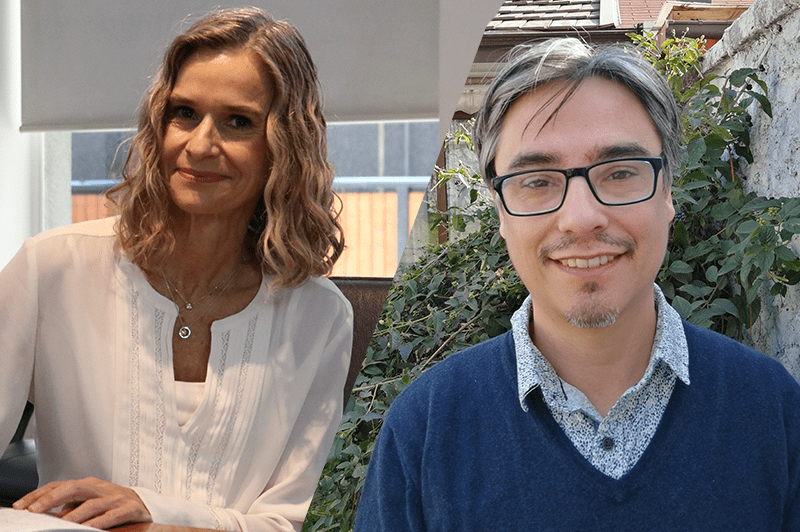Gisèle Labarthe Bordagorry, Climate Change Committee of the Undersecretary of Transport of the Chilean Ministry of Transport and Telecommunications: "From transport we can present initiatives, but we cannot make changes just from here. And from there we are doing a job that aims to be multisectoral".

Climate change is one of the greatest challenges we face, and it requires a joint effort involving different viewpoints. Chile has assumed its international commitments under this vision and therefore it is synergistically addressing different sectors, including transport.
This sector is the second largest fuel-burning activity after the energy industry, in terms of greenhouse gas (GHG) emissions. Even though the country has become a leading reference in Latin America and worldwide in terms of sustainable mobility, it is important that these initiatives have a shared vision and dialogue with other levels.
This is why, with the support of EUROCLIMA+, the Roads and Urban Transport Programme (SECTRA) of the Chilean Ministry of Transport and Telecommunications is developing a National Urban Mobility Programme for Climate Change Mitigation and Adaptation and a National Strategy for Sustainable Mobility. These initiatives are part of the projects for National Urban Mobility Polices and Programmes (NUMP) of the Urban Mobility sector of EUROCLIMA+, with implementation by the German Society for International Cooperation (GIZ).
We spoke with governmental counterparts to highlight the multi-sectoral importance of the project and their experience during its development and implementation. We shared the interview with Gisèle Labarthe Bordagorry, Executive Secretary, and Rodrigo Henríquez Izquierdo, Coordinator of Territorial Analysis, officials of SECTRA, of the Sub-Secretariat of Transport of Chile’s Ministry of Transport and Telecommunications.
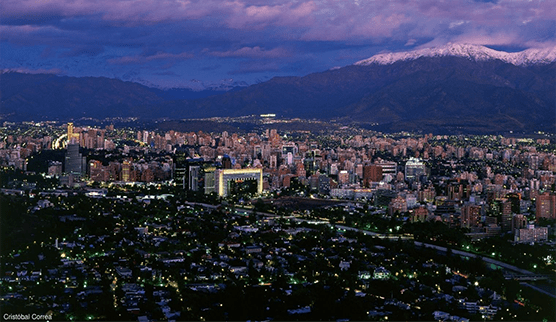
What is the National Urban Mobility Programme and what is the importance of its development in Chile?
Gisèle Labarthe: We started this initiative a couple of years ago with EUROCLIMA+ and GIZ who work from SECTRA. The NUMP consists of generating a strategy focused on sustainable mobility for our country that allows us to bring together in a coordinated manner all those actions that are distributed in different institutions and ministries. In this way, we can systematically coordinate to face the problems of climate change. It is structured as a Strategy and at the same time it is also embodied in a Programme, in order to generate current or future financing for implementing the associated actions.
How are the National Mobility Strategy and the National Urban Mobility Programme linked?
Rodrigo Henríquez: The Strategy is a guiding document at the level of a public policy instrument, whose main role is to generate a point of intersection and interaction between policies and strategies, also of other ministries and which are at another level. It will be very clear in leaving a very well specified vision of what we want to achieve and the participatory process that we are building, validated by as many actors as possible. We believe that as long as there is a very well-established common vision, it will then be more difficult to make mistakes in how to take action.
On the other hand, the Programme is a rather practical tool on its own, a tool that is also within the alternatives of public policy tools that the different actors can access. It is intended more as a financial design that links sources of funding with measures that are within the framework that defines the Strategy.
How does this initiative promote the integration of the transport sector for Chile's Nationally Determined Contributions (NDC)?
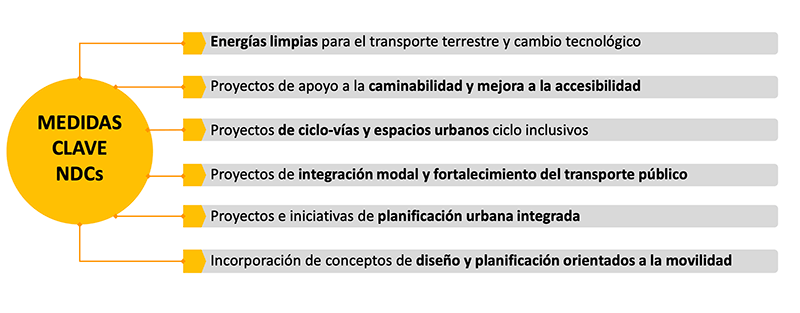
Gisèle: The Strategy is a guideline and in this we want to support the updating of the NDCs. It is very relevant that we are able to support the development of the Transport Action Plan. We were not a relevant actor to be invited to the events for climate change, and we certainly know how strong the impact of the transport sector is. With our incorporation and what we can contribute from our sector is undoubtedly very relevant. There is also the coordination with different ministries. We want to see what the priorities are. We want to be able to coordinate the Strategy and promote synergies in the investments made from here on.
Rodrigo: These commitments, which Chile is beginning to assume internationally, find the Ministry of Transport in a more institutional position, with a reactive response, focused on the merely normative. On the other hand, this new, more systemic response in which transport contributes to the configuration of a city is better adapted to the challenges of climate change, since it generates strategies that allow for the mitigation of GHG emissions.
Due to a commitment related to the progress made by the Ministry of the Environment in this area, the different ministries are invited to create climate change committees within each of the secretariats. We are fortunate that Gisèle is leading the Climate Change Committee of the Undersecretariat of Transport.
What has this process and experience of interlinking efforts with other ministries been like?
Gisèle: One of the products of this work has been a set of multi-sector workshops. It has been very enriching for all of us to get to know each other and to contribute views from different sectors. From the Ministry of Transport and Telecommunications we have our knowledge, but without a doubt we are hobbled against what is happening to them or they see that the eyes of other ministries are focused on other objectives.
Rodrigo: One of the most important things about working on these interdisciplinary and intersectoral issues is the generation of trust between professionals who do not always talk or exchange knowledge, visions, positions, etc. These workshops not only leave us better prepared in terms of working on a common language with the rest, it also gives them more confidence in seeking more global answers from us.
Best practices for sustainable mobility
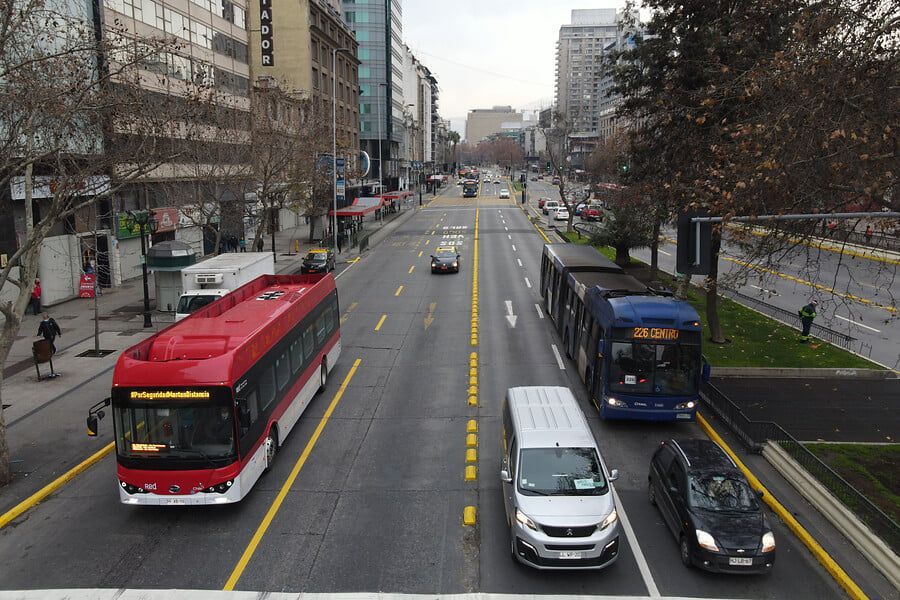
Chile's NUMP project does not start from scratch, as the country has a good track record in sustainable mobility: transport plans, cycle path infrastructure. The Transantiago electric bus system is the largest in the region and the second largest in a developing country after China. This has made it a leading reference in terms of its business model for implementation.
However, these actions require a certain harmony so that agendas are not run in parallel, as the challenges are greater. The diagnoses show that there is growth in the use of private cars and a decrease in the use of public transport, accompanied by a growth in cities which in turn demands increasingly longer journeys. Therefore, transport actions must also be linked to planning, in order to change the trend in urban growth and have a positive effect on sustainable mobility.
"From transport we can present initiatives, but we do not have, we cannot make the changes only from here. And from there we do work that aims to be multisectoral," Gisèle said.
This is accompanied by an awareness in society that has involved important actors such Academia, an increasingly informed and demanding citizenry, as well as the development of an institutional culture, such as the Climate Change Committees hosted by the various ministries.
"There is no harmless action. Everything is useful to the extent that the corresponding synergies are created and thus sustain multiplying effects, rather than different forces that overlap on another”, Rodrigo stressed.
How does the NUMP align with other plans you already have?
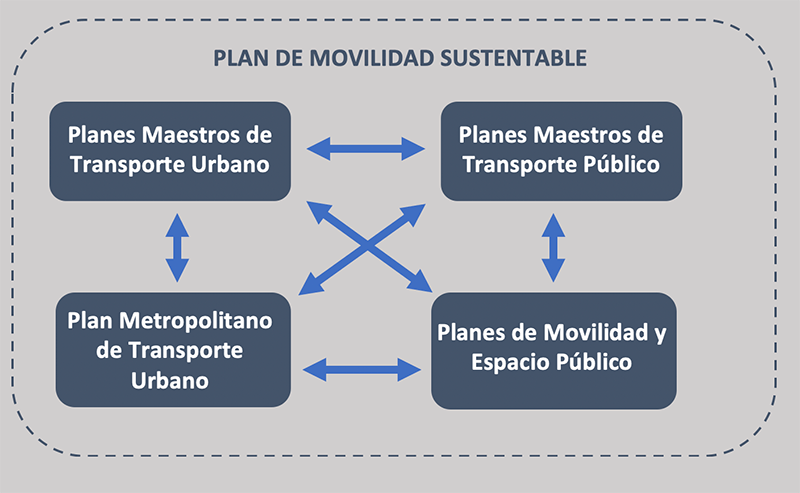
Rodrigo: There is already a policy that is going to be seven or eight years old. More than generating a new instrument that would compete with the other, we thought about developing a strategy that would recognise this and other existing policies and that would offer a joint view with these strategic guidelines in a broader way, and a specific concern with respect to climate change. In this way, it has a more organised role so that the Ministry of Transport is clearer about which instruments it has. We have plans that in their genesis do not include environmental concerns or some concerns that are increasingly visible in Chile and the world: the social inequalities that exist in the territory.
This has led us to discuss how to integrate the methodologies and indicators of economic efficiency that we have been using for some time, with other tools that allow us to make the decisions behind a transport, infrastructure or management plan to improve the situation of cities with regard to mediation and adaptation to climate change.
This is where we find that from the transport system we can make every effort possible: put more transport, propose, connect with certain areas. But if in the end the cities continue to expand in a monofunctional way, only as residences and service sectors accumulated in small places, the action space of our sector would be quite limited.
We can make every effort but only go so far, when it turns out that the country needs twice that. That is where we need joint actions with other ministries and other regions.
How does this help to strengthen decentralisation in Chile?
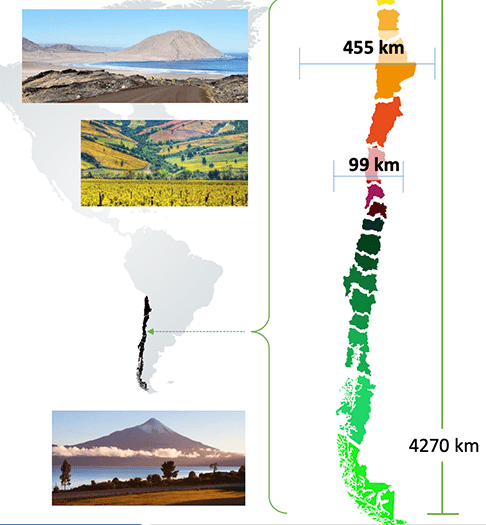
Rodrigo: In Chile there are currently three levels of government: national, regional, and municipal, but there is no metropolitan level. There is no city authority and there are several cities that are composed of more than one municipality. One of the things that decentralisation does is that it explicitly defines that the regional government, the authorities at the intermediate level, are now elected for the first time, as they were previously appointed by the President of the Republic.
This new metropolitan authority must be the figure that manages the city and balances the different plans with the emphasis given them by the strategy at national level to give them local characteristics. The idea is that this national strategy will lead to regional plans or city level plans, framed within a defined strategy. Each region will have to define its own goals according to its own reality and the gaps it must resolve.
In this way, the Strategy plays a very interesting role in providing these future regional governors and this metropolitan authority with an action framework for their management.
How does the funding mechanism work within the NUMP?
Gisèle: How can we finally add up all the sources of funding to move towards the same goal? Today our funding is sectoral and non-binding. We can generate a well-analysed plan, but nothing prevents another ministry from appearing and building another project that escapes this plan. For this reason, we think of the Strategy as a common and coherent framework, so that the plans can be expressed as a single one that will be updated and changed over time and this way the resources of the different sectors can finally be directed towards that same plan.
So this plan will not end up as pretty words, but rather clear actions that even transcend different governments. The idea is that they should not be from one government and then become lost, but that they should go much further.
Beyond whatever sources of funding there are today, we also think we can generate others. This is what we are aiming for with the National Urban Mobility Programme.
What has been your experience with the EUROCLIMA+ programme?
Rodrigo: It has been a great experience, not only because of what international cooperation means in itself, but it gives you some peace of mind to know that you are not alone in this, to know that there are many people in the world who are pushing things in this direction. So feeling like a part of this network is super encouraging.
Through the programme I have been fortunate to take part in international activities, where I have been able to share Chile's experience with people from Africa, Asia, and with other Latin American countries. It is interesting to understand how realities are similar despite their differences.
Gisèle: Working closely with people has also been a great experience. EUROCLIMA+ is not just a fund that is transferred, there is a lot of involvement and teamwork. It rescues that interaction of being able to share knowledge, without a doubt it has allowed us to open up and get to know other realities. That openness has been very rich. I very much appreciate the human warmth of the team that is working with us. The experts generate closeness and trustworthy work. It has been a pleasure to work with them.
Learn more about the EUROCLIMA+ project ”National Sustainable Mobility Strategy and National Urban Mobility Programme for Climate Change Mitigation and Adaptation in Chile” at this link.
For more information:
This email address is being protected from spambots. You need JavaScript enabled to view it.
www.euroclimaplus.org
www.euroclimaplus.org
